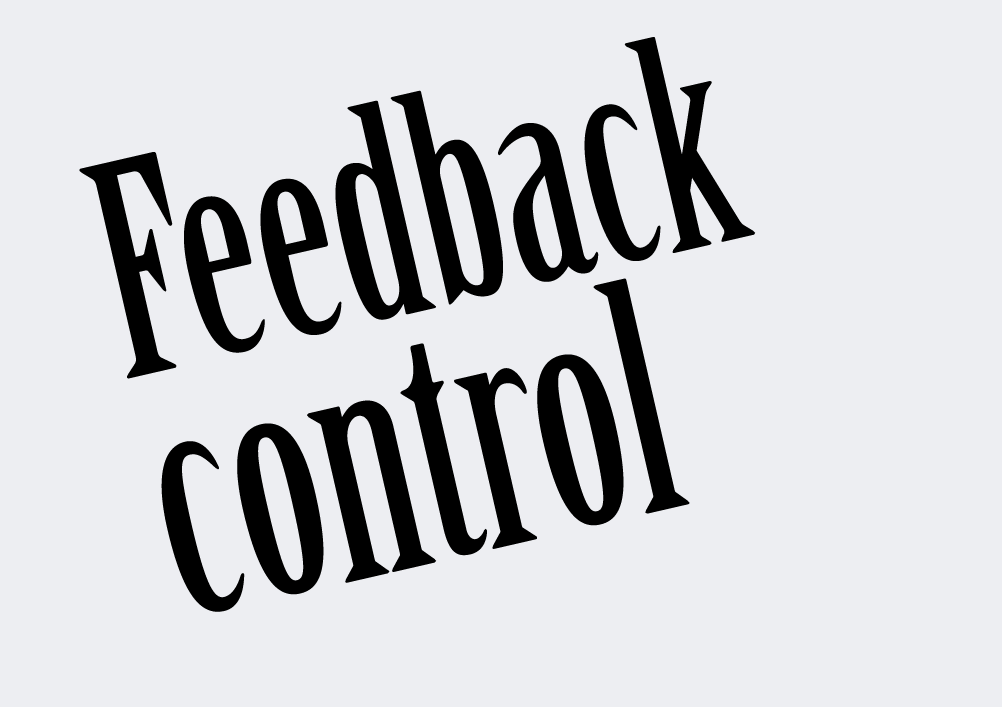Definition
Feedback control is a control system that relies on feedback for analyzing the discrepancy between actual and desired performance so that improvements can be made accordingly.
Detailed understanding
Operations management is the backbone of every business as it deals with the planning of business strategies, organizing procedures and resources, leading and motivating the teams, and finally controlling results for improvement.
Organizational controls are systems used by managers to perform the fourth aspect of management, i.e., control. Here, the purpose of control is to continuously monitor an organization’s functional departments and evaluate the extent of compliance of their policies, strategies, and projects with the company’s goals and objectives. Management control is of 3 types; Feed-forward, Concurrent, and Feedback control.
It is important to set up feedback control as it gives the team a target to achieve and a direction to follow. Each employee strives to perform his best to win his spurs in the evaluation that takes place upon completion of the task. Managers are likely to give rewards like bonuses and appreciation to the best performers to develop motivation in team members. On the other hand, poor or low-performing team members are revealed. Then, through two-way feedback, the reasons for non-performance are identified, and steps are taken to remedy them. Hence, control is necessary for enhancing the efficiency and effectiveness of businesses.
Application of Feedback Control
Feedback control is applied in four steps:
- Setting goals or desired performance standards
- Assessing actual performance
- Measuring the discrepancy between desired and actual performance
- Taking steps towards improvement
STEP 1: Setting Goals or Desired Performance Standard
Goals should be measurable, achievable, and realistic. Mostly, the targets set are in numbers like increasing sales by 20% in the current year or making double profit the next year. Also, the evaluation criteria should be properly communicated with each employee. Employees might be evaluated on the number of deals closed, ethical conduct, teamwork, etc.
STEP 2: Assessing Actual Performance
The employee’s performance, both as an individual and as a team, is measured upon completing the assignment. This measure of obtained performance does not define success or failure unless compared with the pre-defined standard.
STEP 3: Measuring the Discrepancy between Desired and Actual Performance
In this step, the difference between the ideal and obtained results is calculated. If obtained results are better than the target, then the project has been successful. But if the attained outcomes fall short of the target outcomes. In that case, it’s an indicator of a problem in either program design, employee efforts, resource deficiency, management support, or any other factor that needs to be investigated.
STEP 4: Taking Steps towards Improvement
Finally, it’s up to the management to take feedback from the team to detect problem areas and devise solutions. For instance, if the issue arises from external factors like organizational support, workplace environment, or availability of resources, then steps would be taken accordingly. However, if the employee’s internal factors like motivation or skill etc., are the cause of concern, then demotion, layoff, transfer, training, and new hiring could be solutions. Thus, managers strive for continuous improvement as it is the key to success.
Example of feedback control
For example, a life insurance company sets a target of securing 5000 policies before the end of the year. The target is articulated to all departments, including the field force (STEP 1). The field force manager devises a strategy and divides the target policies number among 100 sales representatives (SR). Each SR is given a target to secure 50 policies (STEP 2). The target is met at the end of the year but not as desired. Some SRs had outperformed and secured more than 50 policies, while some have underperformed and failed to secure 50 policies (STEP 3). Now, the manager identifies the underperforming SRs and holds meetings with them to share the methods used by good performing SRs for better convincing and increasing public relations.
Conclusion on feedback control
A feedback control system is used to control performance at the end of the project. The project manager compares desired performance of employees with the pre-set standard to ascertain if employees are putting efforts in the right direction.
There are four steps in the feedback control system. These steps include setting goals, assessing performance, measuring discrepancy, and taking steps to move forward.
Further read on, tothefinance.
